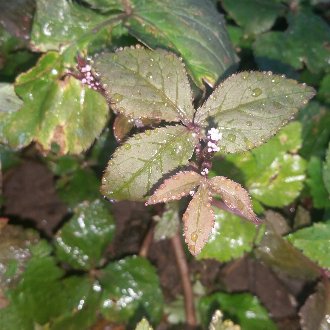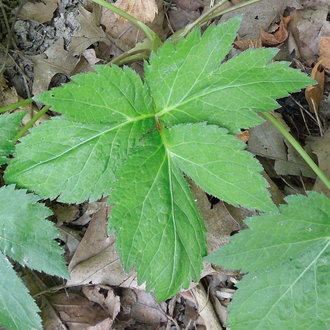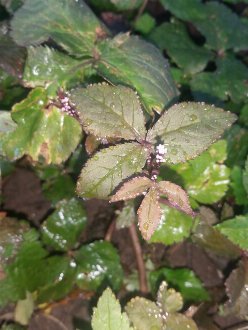Japanese Honewort (Cryptotaenia japonica )
Also known as mitsuba, Japanese wild parsley.
↑Similar Plants
↑Control
This plant is difficult to control due to its prolific seeding, and ability to form a short-term seed bank. However, it does not tend to travel very far by seeding, and once it is removed fully from a site for a period of about 4 years, it rarely will recolonize.
Removal of all flowering plants before they set seed is critical. However, plants can also reproduce vegetatively underground and this process typically begins before seed is produced, so it is preferable to remove plants earlier in spring, typically by April at the latest.
Removal of first-year plants can be carried out later in the growing season, as these plants typically neither flower nor reproduce vegetatively. Follow-up in autumn to look for plants that emerged from cloned underground buds can be helpful.
↑Uses
A red-leafed cultivar is occasionally planted in landscaping. The green-leafed plants are sometimes cultivated as a food plant.
↑Related Plants
This species is closely related to honewort (Cryptotaenia canadensis), which is native to eastern North America.





